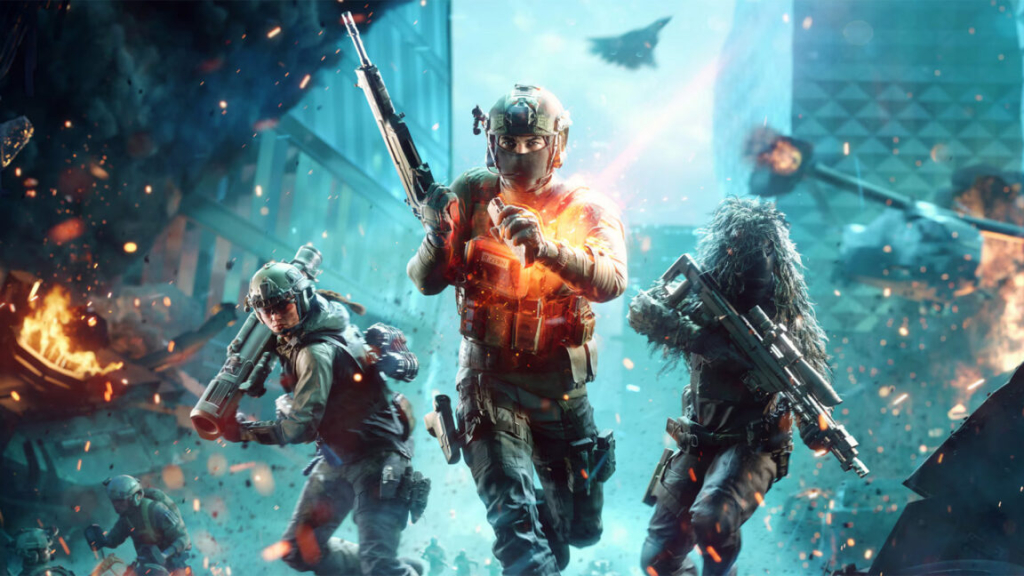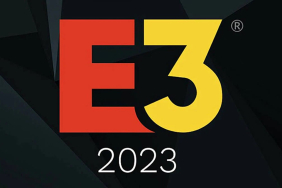As the Battlefield franchise marks its 23rd anniversary, the gaming landscape has dramatically transformed since the release of the original title. Longtime fans of the series often express disappointment over the current direction of AAA games, which they feel have strayed from core elements they cherished.
Currently, EA is actively developing the next installment in the Battlefield series. However, insiders reveal that the project has encountered numerous challenges, including budget issues, cultural friction, and significant disruptions. Concerns among team members are growing regarding whether the game can be completed satisfactorily before its scheduled release within EA’s fiscal year.
Sources indicate that EA has implemented extensive structural and cultural changes in its production approach to deliver a title that aims to rival industry giants like Call of Duty and Fortnite. Notably, previous Battlefield games have struggled to attain similar levels of popularity and financial success.
Conversations with current and former EA employees involved with the development—spanning different studios and job functions—shed light on the situation, though they spoke on the condition of anonymity. EA opted not to comment on the unfolding issues.
Feedback from these sources reveals a work environment marked by intense pressure and long working hours. Many spoke of colleagues experiencing burnout, leading some to take extended leaves of absence. Employees noted that the level of stress on this project exceeded that of previous AAA endeavors.
Despite the turbulence, there remains a collective hope that the game will resonate with players, attributed to the strong initial concepts and the team’s enthusiasm and experience. The unfolding narrative of the game’s creation may also help to elucidate the current state of the gaming industry.
Table of Contents
The road to Glacier
To grasp the situation surrounding the upcoming Battlefield installment—referred to as Glacier—it’s essential to reflect on the series’ history.
In the early 2010s, titles like Battlefield 3 and Battlefield 4 broadened the franchise’s audience, positioning it as a competitor to the then-dominant Call of Duty. Developed primarily by DICE in Sweden, these games combined large-scale warfare with the fast-paced action typical of Call of Duty.
However, the release of Battlefield V in 2018 was divisive, leading to a declining player base amidst a rapidly evolving industry. Titles such as Overwatch and Fortnite began to capture players’ attention, with EA’s attempts at introducing a Battle Royale mode in Battlefield V failing to gain traction.
Following Battlefield V, DICE sought to create a throwback experience reminiscent of its earlier offerings, resulting in Battlefield 2042, which launched in 2021 with disappointing results.
Avoiding previous errors
The developer team was disheartened by the reception of Battlefield 2042. Reports revealed a significant shortfall in meeting pre-launch milestones, necessitating a rushed release. Despite hopes for a more extended development period, the team ultimately had to proceed with a setting that was inadequate.
Some developers felt the decision to release was premature, with one former team member stating that they needed a minimum six-month delay to address critical issues.
Although EA garnered some positive feedback with subsequent updates and additional content post-launch, Battlefield 2042 never realized its full potential. Following its launch, the company initiated a detailed analysis, concluding that execution issues plagued the project, prompting new processes aimed at averting similar pitfalls in the future.
Three notable figures joined EA to lead Glacier’s development, including Byron Beede, a former Call of Duty general manager; Marcus Lehto, co-creator of Halo; and Vince Zampella, a pivotal figure behind the original Call of Duty.
Aiming for an ambitious player count
While Battlefield 2042 struggled, competitors like Call of Duty and Fortnite achieved tremendous success, with lucrative player bases and revenue. Seizing upon this, EA set an ambitious goal for Glacier: attracting 100 million players.
It’s worth noting that previous titles, even the celebrated Battlefield 1, never reached such lofty numbers, with Battlefield 2042 itself posting only 22 million players since its inception.
Critical to achieving these targets, EA designed Glacier with a free-to-play model featuring a Battle Royale mode and implementing monetization options through in-game purchases and seasonal content.
Record-breaking budget
Glacier’s development is marked by the largest budget in the franchise’s history, exceeding $400 million early in 2023. However, production disruptions significantly inflated costs as more developers were enlisted from various EA studios to bring the project back on track, leading to projections well beyond the initial budget.
Doubt among developers
Despite the bold objectives from EA executives, skepticism exists among staff regarding the 100 million player target. Many members of the long-standing DICE team expressed doubts about the realism of this goal.
Some developers believe that significant efforts will be needed to engage audiences without negatively impacting sales of existing titles, and doubts persist about the accuracy of market research supporting these lofty ambitions.
The collapse of Ridgeline
Traditionally, Battlefield titles have struggled with single-player campaigns. However, Glacier promised a complete offering by developing a campaign through a newly established studio, Ridgeline Games. Unfortunately, this effort faltered, leading to the studio’s closure in early 2024.
Sources indicate that internal review systems failed to monitor Ridgeline’s progress accurately, contributing to its eventual downfall. Those involved with Ridgeline report that over-ambitious goals, combined with inadequate resources, hindered their ability to meet deadlines.
With Ridgeline’s shuttering, ownership of the single-player campaign was transferred to DICE, Criterion, and Motive, who found themselves starting anew with tight time constraints, as previous work proved unusable.
Cultural schism
Reports suggest a palpable tension exists between DICE, rooted in its Swedish origins, and the new US-based leadership. Employees at DICE strive to maintain control of the franchise, despite feeling sidelined by the current direction prioritized by EA executives.
This shift has brought cultural dissonance, impacting team dynamics as the project expands in scope. Employees express concerns that financial goals overshadow creative ambitions traditionally upheld by DICE.
As the game development model evolves, more studios collaborate on singular projects under centralized leadership. While this can streamline processes, it has led to complications, resulting in challenges for teams attempting to coordinate effectively across different time zones.
Staff members voiced worries that the evolution of the development process amplifies the stakes for developers, especially when projects falter, further intensifying the pressure to deliver outcomes.
Navigating project hurdles
EA employs a “gates” system to manage the development process, requiring teams to meet specific criteria at various stages. As Glacier approached significant milestones, reports surfaced questioning whether adequate structures were in place to support successful transition.
Concerns lingered as the project neared a critical development phase, with untested features and components still in development. Some employees felt that raising issues resulted in punitive responses, leading to exclusion from key meetings and discussions.
Ultimately, the project cleared its development gates, achieving alpha status by late May 2025, yet with multiple tasks still pending and notable discrepancies affecting the timeline.
Impact on players
As development hurdles accumulate, speculation suggests that key features may not make it into the launch, a common occurrence in the gaming industry. These issues could result in substantial day-one patches, which often frustrate players.
The need for submissions to platforms like PlayStation and Xbox necessitates early deadlines for building and deploying the final product, potentially resulting in unfinished work being delivered to consumers.
Content often ends up being withheld for post-launch updates or seasonal content, with monetized features pushing players to pay cumulatively more for what they may perceive as essential components of the game.
Challenges with single-player content
The single-player campaign, significantly behind schedule, risks being compromised in terms of quality and content delivery. The multiplayer experience remains the primary focus, which may warrant cutting portions of the single-player experience to meet deadlines.
This decision could sacrifice players’ expectations and contribute to the overarching issues faced by developers regarding timelines and resource management.
Burnout within AAA development
The games industry has long been scrutinized for the demanding schedules developers often confront. While efforts have been made to improve conditions since a famous open letter from an EA employee’s spouse two decades ago, chronic problems persist.
First-hand accounts from Glacier’s development teams illustrate the stress and exhaustion experienced by many employees, some of whom have taken extended leaves due to mental health concerns linked to their workloads.
Employees report grueling hours, driven by the need to synchronize with teams across different countries, contributing to an unsustainable working environment.
Despite EA’s resources aiming to provide support to staff, some individuals seeking assistance found limited effectiveness in the framework established to address mental health issues.
Visions for improvement
Amidst a landscape fraught with challenges, calls for systemic change within the gaming industry grow louder. Industry leaders advocate for a re-evaluation of priorities, emphasizing the need for a balanced approach toward game development.
“Focus on slow growth”
During a recent gaming conference, Larian Studios head Swen Vincke criticized prevalent industry practices that prioritize short-term profits. He urged for a slower, more thoughtful development process that fosters innovation over mere revenue increases.
This perspective encourages a shift away from high-stakes one-off projects, suggesting the exploration of diverse, sustainable options instead of relying on one grand game.
Addressing market saturation
As the gaming space becomes increasingly crowded, concerns rise over the viability of large-scale titles. Recent data indicates an oversaturation in popular gaming genres, suggesting a critical reevaluation of strategies to attract and maintain player bases.
Many in the industry fear that disproportionate investments in flagship titles may not yield favorable returns and could lead to burnout among development staff.
Choosing smarter strategies
The surge in unionization efforts across the gaming sector reflects a growing desire for more sustainable labor practices. These movements signify a shift toward addressing the industry’s longstanding issues, enabling a more supportive work culture.
Industry executives have stressed that finding balance is crucial to ensure the health and well-being of the workforce in the face of escalating demands. Their insights emphasize the potential benefits of giving developers ample time and resources to fulfill their objectives without compromising their creativity or well-being.
Ultimately, developers at EA are committed to realizing their vision for the next Battlefield game, hoping to deliver a product that meets industry expectations while uplifting the experiences of both players and creators.






